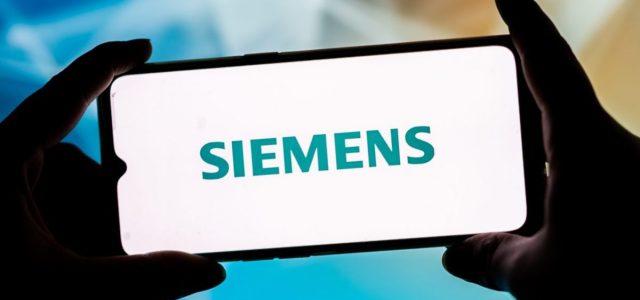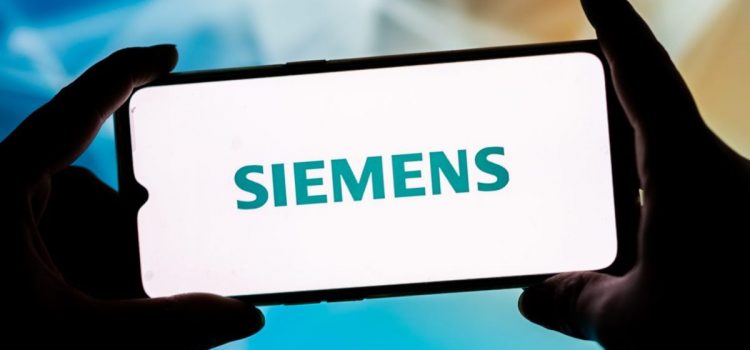


Join us on November 9 to learn how to successfully innovate and achieve efficiency by upskilling and scaling citizen developers at the Low-Code/No-Code Summit. Register here.
Enterprises are increasingly transitioning from selling products to selling everything as a service to take advantage of innovations in the cloud. In general, they face a loss in revenues for several years while refactoring existing products into subscription services.
But some transitions are much faster. Siemens Digital Industries has grown revenues from about $15 billion a year to $20 billion within only two years of transitioning its digital twin portfolio to an industrial metaverse cloud called Siemens Xcelerator.
VentureBeat caught up with Cedrik Neike, CEO of Siemens Digital Industries and member of the management board at Siemens AG. He gave us a peek under the covers of this success and some insight into the future of the industrial metaverse.
For context, Siemens Digital Industries is a division of the holding company Siemens AG that focuses on tools for designing, testing and manufacturing physical products like cars, airplanes, computer chips and consumer goods. Other Siemens divisions focus on trains, smart infrastructure, healthcare and energy.
Event
Low-Code/No-Code Summit
Learn how to build, scale, and govern low-code programs in a straightforward way that creates success for all this November 9. Register for your free pass today.
The jewel of the Siemens portfolio
Neike said that Digital Industries is the pearl of the Siemens portfolio. Its factory automation tech, a programmable logic controller (PLC), is installed in 30% of all manufacturing equipment and its design and product lifecycle management tools are a staple in most industrial companies.
“We are in the first years of the SaaS [software-as-a-service] transition, but we are actually migrating our customers to SaaS faster than we anticipated,” Neike said. “We want to help engineers design a product mechanically and electrically, test it and optimize it.”
When Neike first took hold of Digital Industries two years ago, he launched an ambitious, three-pronged digital transformation strategy:
- Moving all digital software to the cloud and connecting them to the Siemens Xcelerator industrial metaverse platform for digital twins. This includes tools for product lifecycle management, chip design, physical simulation and low-code application development. Digital Industries is also collaborating with sister Siemens companies to create comprehensive digital twins for buildings, infrastructure and railroad infrastructure.
- Connecting manufacturing equipment to the cloud. Siemens manufacturing customers generate about 2,200 terabytes of data a month. Siemens wants to help them analyze, filter, and train artificial intelligence (AI) algorithms on this data more efficiently. For example, Siemens is opening its PLCs to the Siemens Xcelerator program to help enterprises connect their factory automation to digital twins.
- Extending digital twins to the supply chain to drive efficiency and resilience, as well as integrating tools for analyzing carbon footprint across partners. Internally, Siemens has created the Degree Framework, which sets measurable social, governance and environmental goals. It has also added new tools for calculating the CO2 footprint of a product’s bill of materials (BOM) so enterprises can optimize for the right balance of cost and CO2 footprint. Siemens is also partnering with the German auto industry on Catena-X to share sustainability data across the supply chain.
Industry 4.0 catches up with talk
Neike attributes the massive growth to the ketchup bottle effect in which you turn the bottle over, nothing comes, but after hitting it a few times, it all comes out at once. “Everybody was talking about automation and digital twins, but now they’re investing in it,” he said.
Siemens has one of the most extensive portfolios of simulation, optimization, testing and design tools to link digital twins. For example, its PLCs in the factory generate terabytes of data that can calibrate a production digital twin with live data from the factory floor. This can help teams look for bottlenecks and see quality defects.
The goal is to transform the way industry builds factories for new products. Siemens has tested the combination of these capabilities at its internal PLC factory testbed. When the semiconductor shortage hit, teams at the factory used this ensemble of digital twins to redesign a board to take advantage of new parts, optimize the design and push it into a product within days. This kind of redesign can take six months or more using traditional approaches.
Siemens is also looking at going beyond selling individual tools and services to building a platform for new industries and infrastructure. For example, it just launched a project in concert with the Automotive Cells Company, a joint venture between Mercedes, Stellantis and TotalEnergies to build several battery gigafactories. Siemens is helping with factory automation, electrification and building management to help accelerate construction and operations.
It’s unclear whether the industrial metaverse will be one fully integrated platform or islands of integrated digital twins that live in separate multiverses. Vendors must strike the right balance between maintaining a competitive moat and helping customers connect their different systems.
Neike predicts, “Companies will have centers of gravity, which they’re really good at. We are really good at building a data model, simulating it and telling machines what to do in a production process.”
Siemens is betting heavily on partnerships to flesh out the pieces. For example, it is partnering with Nvidia to use the Omniverse platform to make industrial digital twins look as good as a Hollywood movie and to integrate Nvidia GPUs into Siemens industrial edge computers. It’s also partnering with dozens of leading domain experts, including Esri, Bentley, and Accenture. These partnerships will allow Siemens to focus on its core competency in solving engineering and production challenges in key verticals.
“We know how a brewery works, how a car factory works and how a battery works. We will not build the big cloud systems ourselves,” Neike said.
No one company can do it alone, but Siemens is becoming a convener in this space to align industrial expertise and technology to bring the best solutions to market for customers who see the value in faster speed-to-market, more sustainable and economic processes, and best-in-class engineering. In the long run, Neike hopes to combine some of the best aspects of Silicon Valley with German industrial engineering.
“Silicon Valley has this capability to scale immensely,” Neike said. “Coming back to Siemens, I discovered the capability to understand processes deeply. And I think there’s something to be done by bringing these two together and really making sure that we are taking Siemens radically into the cloud. We need to make it open, interactive and interoperable.”
VentureBeat’s mission is to be a digital town square for technical decision-makers to gain knowledge about transformative enterprise technology and transact. Discover our Briefings.
